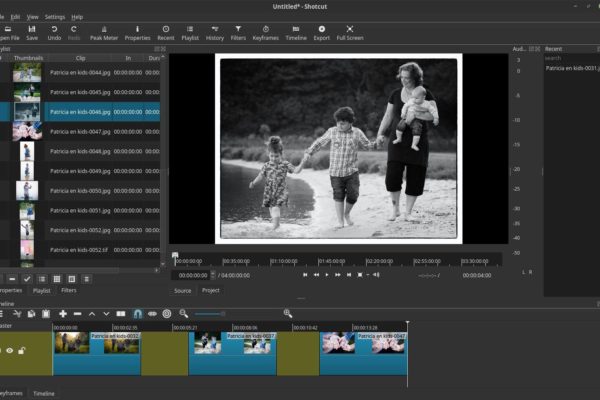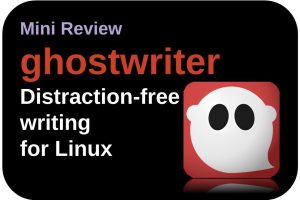There was a time when Linux was not immediately the first choice as a platform for video editing. Linux always had a lot to offer for many other purposes, but it was better to use Windows and macOS for video editing. But a lot has changed in recent years. In addition to the well-known and solid solutions such as kdenlive, many other software solutions have been added or have grown strongly in quality. With the arrival of DaVinci Resolve Linux, for example, has become a truly professional video editing platform. But also relatively simpler yet very robust solutions such as Olive and Shotcut ensure that Linux is no longer behind as a platform for serious video editing. And this week the seventh release of 2019 has already been released for one of my favorite Linux based video editing tools Shotcut. So let’s have a look at the new features and improvements in the Shotcut 19.09 video editor.
About Shotcut
For those who are not familiar with the Shotcut software solution here a short description. Shotcut is a non-linear video editor. A non-linear editing system is a video editing metaphor that performs non-destructive editing on your video source material, in contrast to old school methods of analog linear video editing. With a non linear video editor it is possible to use your source components in a non-linear way. So non-linear editing is a method that allows you to edit in a video clip without being hampered by the physical sequence in the video clip.
The Shotcut software is based on a flexible to set up, but also a logical and clear interface and offers a powerful set of tools. For the most part, Shotcut works as an experienced video editor would expect from a modern video editing application. It uses a similar layout as many other applications of this type. Shotcut offers many out of the box expansions, filters and effects and powerful supporting functionalities such as precise snapping of clips, ripple trim and drop. overwrite and insert functionality and most recently the frequently requested keyframing tool, which makes it possible to implement animations and time-related mutations, such as the ability to move and zoom images or digital photos.
Shotcut is a powerful application, but requires some patience and perseverance to discover what it can do. But there is a lot of support out there. One of my favorites is a free 12 lesson Youtube series on Shotcut on Ryndon Ricks channel, called TJ Free. With his channel he tries to provide accurate information for people looking for free alternatives to proprietary and paid software. He really deserves to have a look at his different video series.
You can find the TJ Free lessons via the following link:
What is new
Some of the new functionalities are:
- Added multi-select to Playlist as welll as Select All
- Ctrl+Shift+A) and Select None (Ctrl+Shift+D) to its menu.
- Added multi-select to Timeline, which is currently limited to the remove/delete and lift operations.
- Added Select All (Ctrl+A) and Select None (Ctrl+D) to the Timeline menu.
- Added new video filters:
- Dither
- Halftone
- Posterize
- Threshold
- Elastic Scale (non-linear horizontal scaling)
- Blend Mode (overrides the track Properties > Blend mode for that clip)
- Added the option Play After Open (default on) to the playlist menu.
- Added keyboard shortcuts for some existing Timeline menu actions:
- Insert Track (Ctrl+Alt+I)
- Remove Track (Ctrl+Alt+U)
- Copy Timeline to Source (Ctrl+Alt+C)
- Added a Galician translation.
What has been fixed, changed and improved
- Fixed a crash in some audio filters when using 1 or 6 channels.
- Fixed showing language English (Great Britain) when English (United States) is chosen.
- Fixed a crash bug in v19.06 when changing image sequence Repeat in Properties.
- Fixed a bug in v19.08 where dropping a video into Playlist on a new project does not update the Automatic Video Mode.
- Fixed a bug in v19.08 in the on-screen rectangle control (as used in Text: Simple and Size and Position filters among a few others).
- Fixed changing speed of a clip with a colon in the file name.
- Fixed reading MLT XML with a colon in the file name of a relative path.
- Fixed the playlist menu button disabled after removing all clips.
- Fixed reloading Fade In Video or Fade Out Video using opacity may alter the colors.
- Fixed Convert to Edit-friendly failing on GoPro videos.
- Fixed filters during a transition are truncated after a Split on the timeline.
- Fixed a bug in v19.08 where Keyframes becomes broken after trimming on the timeline.
- Reduced the size of the installation by 255 MiB!
Upgraded FFmpeg to v4.2. - Increased export process priority on Windows from Low (idle) to Below Normal.
- Changed default HEVC quality to 45% so the x265 crf matches its default of 28.
- Added the clip’s name to the end of a clip in Timeline if its block is wide enough.
- No longer seek after dropping a clip from the player to the
Timeline.(Source: above lists have been copied from https://www.shotcut.org/blog/)
How to install Shotcut 19.09
Shotcut is available for Windows, macOS and Linux. Shotcut for Linux can be installed and used in different ways like via AppImage, Flatpack and Snap. But it is even possible to use a portable version that does not require an actual installation. You can find information on the different ways how to download Shotcut on the download page of the Shotcut website.
Find further detailed information about Shotcut on https://www.shotcut.org/.
Final words
As I already said Shotcut for Linux is getting better and better. The team behind Shotcut is very active and they manage to roll out a lot of releases each year with real improvements with each release. Most Linux users with a passion for video editing are probably using Kdenlive, but Shotcut really deserves it to have a thorough look at as well. It has a bit of a learning curve but invest some time in it, for example via the before mentioned TJ Free lessons and you will be a happy editor. So give it a try.




